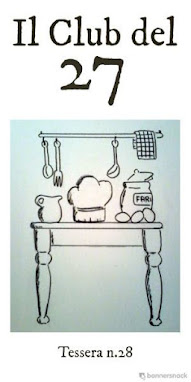Kela ka Rayta and the Elephant Festival
la ricetta in italiano qui
Despite its many contradictions, India is a country of so many colors and so many celebrations, people there love to celebrate even the smallest event, richly and sumptuously.
One of these is the Elephant Festival, in March, along with the great Holi celebrations, the spring festival also known as the colors and love festival.
Image by Charles Fréger
In 2013, the photographer Charles Fréger went to Jaipur to portray elephants in all their splendor, brightly painted and richly adorned with anklets and drapes. He was attracted by elephants because these animals are sometimes religious and sometimes exploited. They also have, however, strong personality, he says, and they play and move all the time.
The photos are beautiful and speak for themselves, but such a pity that the parade failed due to pressure from animal rights groups. They organized a cultural program without elephants then. And it is very likely that once again they will not participate in 2015 celebrations, replacing them with more cultural events (from goindia).
You can see C. Fréger's gallery here.
The photos are beautiful and speak for themselves, but such a pity that the parade failed due to pressure from animal rights groups. They organized a cultural program without elephants then. And it is very likely that once again they will not participate in 2015 celebrations, replacing them with more cultural events (from goindia).
You can see C. Fréger's gallery here.
India is one of the most fascinating places on the planet. Traditions, nature, religion and culture. Walking through the city streets busy with people or getting yourself in the wilderness, reveals scents and colors of a primordial world that keeps intact its mystical instincts but looks into modernity at the same time.
In Jaipur, every year at the beginning of March, a gorgeous event reminds of the ancient splendor and the cosmic grandeur of the elephant, attracting hundreds of people from all over the world. It's the Elephant Festival, an exhibition where the elephants are the protagonists. The festival is about a long procession of elephants, camels and horses, all richly adorned, followed by dancers and musicians. An award is also given to the best decorated.
They walk in the parade with their whole body - from head to toe, ears to back - fully painted in many colors and with patterns of all kinds, competing with each other.
The Indian Royals, Hindus and Muslims had realized long ago that power is exercised better from the back of an elephant. The commonsremained blinded to the appearance of the king riding on elephants whose ivory tusks glittered with gold and silver and whose bodies shone with silks and velvets.
"An elephant mounted by a king is shining; a king riding on an elephant is bright, " it's written in an old manuscript.
Symbol of strength and stability, the Indian elephant was used by kings (Maharaja) and governors for their travels, in battle, in the representations of power and wealth and religious processions. It happened also in the royal court of Rajasthan - northwest of the Indian peninsula - where the sovereigns used to ride on elephants adorned with jewelery, brocade dresses and painted with different shades of color along Jaipur streets, named the sumptuous Pink City, the first capital of the kingdom, nowdays of the largest state of India.
Today tourists are the new kings, even at the elephant festival in Jaipur, where instead of the ceremonial feasts there are lots of polo matches, tug of war and a beauty contest, all with elephants. These animals spend most of the day carrying tourists at Amber Palace, a historical site that attracts visitors from all over the world. In this annual occasion the elephants are dressed with the most beautiful and luxurious costumes.
Curiosity
Asian elephants have large tusks then their African cousins,
and in many male tusks are absent.
Professional artists paint the elephants before the Jaipur parade,
the night before Holi.
The ankus (elephant goad) is one of the eight auspicious objects of Hinduism.
Once Maharajas held up precious ankus as a symbol of their power.
Nowdays the pointed instrument is outlaw, the mahouts ride the elephant with wooden sticks.
According to Hindu legend, the elephant was one of the treasures that emerged from the ocean,
when gods and demons waved up the waters.
Once the elephants carried soldiers into battle, now lead brides and grooms in wedding processions.
Some mahouts cover the elephants' canines with long plastic fangs
(left and top right) to make the animals more majestic.
After the party mahouts curries elephants to remove the color,
though some trace can remain.
Today traditional mahout communities have almost disappeared,
says Suparna Baksi Ganguly, a former member of the Task Force on Indian Elephants.
and in many male tusks are absent.
Professional artists paint the elephants before the Jaipur parade,
the night before Holi.
The ankus (elephant goad) is one of the eight auspicious objects of Hinduism.
Once Maharajas held up precious ankus as a symbol of their power.
Nowdays the pointed instrument is outlaw, the mahouts ride the elephant with wooden sticks.
According to Hindu legend, the elephant was one of the treasures that emerged from the ocean,
when gods and demons waved up the waters.
Once the elephants carried soldiers into battle, now lead brides and grooms in wedding processions.
Some mahouts cover the elephants' canines with long plastic fangs
(left and top right) to make the animals more majestic.
After the party mahouts curries elephants to remove the color,
though some trace can remain.
Today traditional mahout communities have almost disappeared,
says Suparna Baksi Ganguly, a former member of the Task Force on Indian Elephants.
Kela ka Rayta
Basically, Rayatas are refreshing yogurt drinks Which Accompany the main meal. Kela ka Rayata anche is eaten as an Accompanying dish, Primarily in the vegetarian cuisine. More recently, excellent refreshing drinks have originated from These yoghurts by adding ice cold mineral water.
You need:
10 g butter
1 tablespoon grated fresh coconut
200 ml yoghurt
half very ripe banana
half teaspoon fresh mint
3 tablespoon mineral water
10 g butter
1 tablespoon grated fresh coconut
200 ml yoghurt
half very ripe banana
half teaspoon fresh mint
3 tablespoon mineral water
Heat butter, roast coarsely grated flesh of coconut Briefly and leave to cool. Put yoghurt, coconut flesh, banana and mint in the mixer and mix well. Pour the mixture into a long drink glass and fill up with ice cold mineral water. Mix well and serve immediately.
Kela ka Rayta is served after or even Mainly During the meal.
Fresh coconut can be substituted with coconut flakes or grated coconut.
Still one week to spend in India: I'll be collecting Indian recipes till Nov. 16th midnight, Rome time for the World ABC Culinary Tour, info and rules here.
Kela ka Rayta is served after or even Mainly During the meal.
Fresh coconut can be substituted with coconut flakes or grated coconut.
Still one week to spend in India: I'll be collecting Indian recipes till Nov. 16th midnight, Rome time for the World ABC Culinary Tour, info and rules here.














Nessun commento:
Posta un commento
grazie della visita e gentilmente firma sempre i tuoi commenti!
thanks for passing by and please sign up your comments!